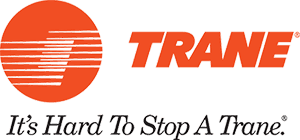Every industry has its acronyms, but the HVAC industry might have more than most. Even the industry’s name is an acronym: HVAC stands for Heating, Ventilation, and Air Conditioning. While you might be familiar with the term HVAC, other terms may be new to you. Understanding these heating and cooling metrics can help you choose the right system for your home and improve your overall comfort and efficiency.
What Do Those HVAC Acronyms Mean?
The acronyms in the HVAC industry primarily relate to the energy efficiency of heating and cooling units. In this article, you will learn what these acronyms mean, the importance of energy efficiency ratings, and how these ratings may have changed since you last considered buying an HVAC system.
We’ll cover:
- 2023 Updated Efficiency Requirements
- Cooling Efficiency Ratings
- SEER2 Ratings
- EER2
- Heating Efficiency Ratings
- HSPF2 Ratings
- AFUE
You’ll learn what all these terms mean and how each metric impacts energy efficiency and cost savings.
2023 New Minimum Efficiency Requirements
On January 1, 2023, the U.S. Department of Energy (DOE) issued new minimum energy efficiency standards for HVAC equipment. The new standards vary by region. Before the change, efficiency metrics included SEER, EER, and HSPF. With the update, the ratings are now SEER2, EER2, and HSPF2.
These new standards aim to lower energy use in the U.S., helping you save energy and money by purchasing a more efficient HVAC system. For detailed charts comparing the new ratings to the old ones, check out the comprehensive information available on the Boer Brothers Maintenance Plan page.
Cooling Efficiency Ratings
Our first two metrics, SEER2 and EER2, measure your cooling system’s efficiency. These ratings apply to central air conditioners and heat pumps, which cool your home in the summer and heat it in the winter.
SEER2
SEER2 stands for Seasonal Energy Efficiency Ratio. An air conditioner’s efficiency changes depending on the outdoor temperature. Your AC is more efficient on cooler days and less efficient on hotter days as it works harder to keep your home cool. SEER2 measures the average efficiency over a range of temperatures, similar to measuring your car’s average miles per gallon across different driving conditions.
The higher the SEER2 rating, the more efficient the unit is. Depending on your usage, a more efficient unit can help you use less energy and save money on cooling costs. Minimum SEER2 requirements for cooling units vary based on location and unit capacity.
SEER vs. SEER2
New energy efficiency regulations went into effect in January 2023. Previously, the required SEER rating was lower. Today, in the North, all types of air conditioners must have a SEER2 of 13.4 or higher (equivalent to 14 SEER). In the Southeast and Southwest, SEER2 ratings depend on the cooling system type and capacity, with split system air conditioners requiring a SEER2 rating of 13.8 to 14.3 (equivalent to 14.5-15 SEER).
EER2
EER2 stands for Energy Efficiency Ratio, measuring the energy efficiency of an air conditioner or heat pump at an outdoor temperature of 95°F. EER2 is particularly important if you live in a hot climate, as it measures efficiency during peak cooling needs.
EER2 vs. SEER2
While both EER2 and SEER2 evaluate cooling efficiency, they use different temperature conditions. EER2 measures efficiency at peak cooling need (95°F), while SEER2 is an average efficiency over the entire cooling season (65°F to 104°F).
Heating Efficiency Ratings
Whether you’re considering furnace replacement or heat pump replacement, it’s important to understand the heating efficiency ratings of the equipment you’re considering. Working with your dealer to choose a matched system ensures maximum energy efficiency and comfort.
HSPF2
HSPF2 stands for Heating Seasonal Performance Factor, measuring how efficiently your heat pump heats your home during winter. The DOE requires split-system heat pumps to have an HSPF2 of 7.5 or higher and packaged heat pumps to have an HSPF2 of 6.7 or higher. The higher the HSPF2 rating, the more efficient the heat pump.
HSPF2 vs. SEER2
Since a heat pump both heats and cools, its efficiency is measured by both metrics: HSPF2 for heating and SEER2 for cooling. Choosing a heat pump with a higher HSPF2 rating can save on heating costs, especially in colder climates.
AFUE
AFUE stands for Annual Fuel Utilization Efficiency, measuring how efficiently your furnace or boiler converts fuel to heat. The higher the AFUE rating, the more efficient the furnace. The current minimum AFUE allowed by the DOE for furnaces is 80%. The AFUE rating is expressed as a percentage, indicating how much of the fuel burned goes directly to heating your home.
Understanding BTUs is also important. BTU stands for British Thermal Unit, representing the amount of heating or cooling output a system can provide. Ensuring your system is correctly sized for your home is crucial for optimal performance.
Considering HVAC Replacement?
Browse our HVAC equipment. Each product page includes the efficiency ratings for that unit, helping you make an informed decision. You can also refer to our pricing guide to get an idea of what your HVAC replacement cost might be.
Work with the HVAC Experts
The best way to choose an HVAC system that meets or exceeds your energy efficiency requirements is to work with a Trane Comfort Specialist. Our local dealers are experts in the HVAC industry and can make product recommendations tailored to your needs and home.
For more information and to explore your options, visit Boer Brothers Heating & Cooling. Let us help you achieve maximum comfort and energy efficiency in your home.

